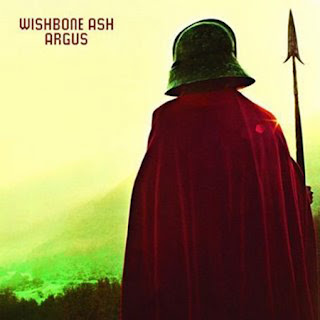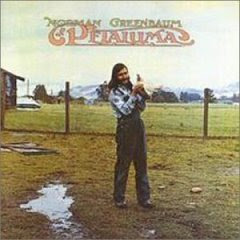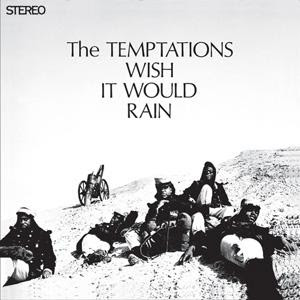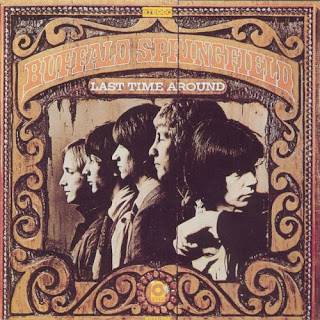 The Small Faces
The Small Faces were the best English band never to hit it big in America. On this side of the Atlantic, all anybody remembers them for is their sole stateside hit, "Itchycoo Park," which was hardly representative of their psychedelic sound, much less their full musical range -- but in England, the Small Faces were one of the most extraordinary and successful bands of the mid-'60s, serious competitors to
the Who and potential rivals to
the Rolling Stones.
Lead singer/guitarist
Steve Marriott's formal background was on the stage; as a young teenager, he'd auditioned for and won the part of the Artful Dodger in the
Lionel Bart musical Oliver!
Marriott was earning his living at a music shop when he made the acquaintance of
Ronnie Lane (bass, backing vocals), who had formed a band called the Pioneers, which included drummer
Kenney Jones.
Lane invited
Marriott to jam with his band at a show they were playing at a local club -- the gig was a disaster, but out of that show the group members decided to turn their talents toward American R&B. The band -- with
Marriott now installed permanently and
Jimmy Winston recruited on organ -- cast its lot with a faction of British youth known as the mods, stylish posers (and arch enemies of the leather-clad rockers, sometimes with incredibly violent results) who, among their other attributes, affected a dandified look and a fanatical embrace of American R&B. The quartet, now christened the Small Faces ("face" being a piece of mod slang for a fashion leader), began making a name for themselves on-stage, sparked by their no holds barred performance style.
Marriott had a uniquely powerful voice and was also a very aggressive lead guitarist, and the others were able to match him, especially
Jones, who was a truly distinctive drummer.
The quartet was signed by manager Don Arden who, through his management company, got the Small Faces a record deal with Decca/London. The band's debut single, "What'cha Gonna Do About It," a blatant ripoff of
Solomon Burke's "Everybody Needs Somebody to Love," co-credited in this version to longtime British songwriter/producer
Ian Samwell, was released in August of 1965 and reached number 14 on the charts; a second single, "I've Got Mine," failed to chart when released in November. Soon after its recording,
Winston exited the lineup; he was replaced by
Ian McLagan (organ, guitar, vocals). The group returned to the charts in February of 1966 with "Sha-La-La-La-Lee," which rose to number three in England. Three months later, they were back at number ten with "Hey Girl," a
Marriott/
Lane composition that inaugurated the songwriting team, a development strongly encouraged by their manager, who appreciated the enhanced earnings that original hits enjoyed. This single heralded their first album, a rather hastily recorded long-player entitled
Small Faces. Their real breakthrough came with the next single, another
Marriott/
Lane original, entitled "All or Nothing," which topped the U.K. charts in the course of a ten-week run. Its follow-up, "My Mind's Eye," was successful as well, but its release infuriated the bandmembers, because as far as they were concerned, it was unfinished -- they'd furnished a demo to Arden who, in turn, had turned it over to Decca as a finished piece, and the latter had released it.
That release brought to a head the group's growing alienation from their manager, over his handling of their business affairs and bookings, as well as their relations with Decca. Despite their string of five hits, Arden was treating the group as a nonrenewable resource, booking them too many shows -- as many as three a night -- as though they had no future and had to earn fees while the fees were being offered. This, in turn, prevented
Marriott and
Lane from exploring their full potential as songwriters, and in 1966, with albums like Rubber Soul and Revolver emanating from
the Beatles and
Aftermath from
the Rolling Stones, songwriting was becoming an essential activity for any band that could do it. Further, the group had evolved both musically and intellectually from their beginnings -- by the spring of 1966, in place of the occasional weed or amphetamine (the latter an essential part of the mod lifestyle), they'd begun experimenting with LSD and, like many other artists, found their work and sensibilities altered by it -- they could still do the soul numbers on-stage, and write passages in that vein for themselves to play and sing, but the subject matter of their songs, even when they did concern love, became decidedly more complex and experimental, along with their sound.
This is where Arden and Decca Records' treatment of them really began to grate on the bandmembers, because their manager didn't feel like budgeting for anything more than the standard, union-dictated three-hour sessions with breaks, hopefully yielding at least a song per session, and they had songs in mind now, and sounds to go with them, that were too bold to be worked out in three hours. Despite four hit singles to their credit, they'd been given less time to complete their debut LP than
the Rolling Stones -- who'd abandoned Decca's studios, with their iron-clad union rules and engineers who wouldn't let them play at full volume, in favor of RCA Studios in Hollywood -- usually got to complete one of their singles. And, finally, between the recording costs at Decca and Arden's way of handling their finances, the Small Faces weren't seeing much money, considering their chart successes to date.
By the end of 1966, the Small Faces had severed their ties with Arden which, in effect, ended their relationship with Decca (though the two sides would argue and debate that point for a while), and in early 1967 moved under the wing of
Rolling Stones manager/producer
Andrew Loog Oldham. At the time,
Oldham was one of the top three or four producers in England, thanks to his work with
the Stones (and a few other acts such as
Marianne Faithfull), and his management of that group was considered one of the most successful business relationships in pop music.
Oldham had started his own label, Immediate Records, which was so far devoted to a few licensed American masters, the work of promising neophytes, and a few unwitting contributions by star guitarists -- including
Eric Clapton and
Jeff Beck -- who thought they were cutting demos and jamming with producer/guitarist
Jimmy Page. Getting the Small Faces as clients was the first step to getting them onto his label, thereby providing the label with the anchor of a proven hitmaking outfit (
the Rolling Stones were locked into their Decca Records contract and, in any case, usually seemed to keep themselves at arm's length from Immediate's activities, beyond any informal obligations they felt they owed
Oldham). By mid-1967 he had succeeded in doing precisely that, signing the group to Immediate -- and with the shift in management and label, the Small Faces suddenly found themselves with a drastically reduced touring schedule and vastly increased time available in the studio, and their sound immediately became looser.
They started things off of just right for the new era with one of the most quietly subversive drug anthems ever to tiptoe its way into the U.K. charts, "Here Comes the Nice." A cheerful, unassuming ode to a drug dealer, it somehow escaped the notice of censors and became one of the finest above-board expressions of appreciation for recreational drug use of its era. There were other drug songs to follow, including "Green Circles," that ended up on their albums -- they remained a top-flight R&B-driven band, but a much wider array of sounds and instruments began figuring in their music. Their first Immediate album, entitled
Small Faces (known in the U.S., where it was released somewhat belatedly through Columbia Records' distribution, as
There Are But Four Small Faces), was issued in mid-1967, and was an instant hit. In August of that year, two months after "Here Comes the Nice" wafted its way to the airwaves, they released "Itchycoo Park," a lilting, lyrical idyll to the Summer of Love, loosely based on a hymn known to
Ronnie Lane and featuring
Marriott in his gentlest vocal guise -- this ode to a psychedelic sunny afternoon captured the hearts of listeners on both sides of the Atlantic and became the Small Faces' sole claim to fame in the United States.
Ironically, although they were always glad to have a hit, the bandmembers weren't entirely pleased with the single's success, because they felt the song didn't represent their true sound, and it was also extremely difficult to play on-stage, owing to its acoustic guitar sound and varied musical textures. What's more, the band had bigger aspirations than doing more hit singles --
the Beatles' success with
Sgt. Pepper's Lonely Hearts Club Band had set the album up as the new primary medium for musical expression, and they were eager to get to work on a canvas that size. Across five months during 1968, in at least four different studios, they recorded what proved to be their magnum opus,
Ogden's Nut Gone Flake. A mix of Cockney whimsy, spoken word recitations (courtesy of actor/recitalist
Stanley Unwin), hard rock, blue-eyed soul, and druggy freakbeat sensibilities, it was probably the most English and the most ambitious of the concept albums that followed in the wake of
Sgt. Pepper's, and further enticed potential purchasers (and confounded record distributors and retailers, not to mention American listeners totally unfamiliar with the actual Ogden's tobacco tins) with its round-sleeve-in-a-square-frame packaging.
The resulting album -- which the group only performed in its entirety once (although numbers like "Rollin' Over" became permanent parts of their stage set), in a live-in-the-studio television broadcast called Colour Me Pop -- was a critical and commercial success, and has received new cycles of rave reviews across the decades since. The group's fortunes didn't match the reception for the album, however -- in June of 1968, to announce the release of the album, Immediate took out an ad in the music trade papers that included a parody of the Lord's Prayer that managed to offend several million people before an apology from the band was issued. Their relationship with Immediate was further strained when, over the objections of
Marriott, the label released the song "Lazy Sunday" -- which he'd recorded as a joke -- as a single. Its subsequent rise to number two on the British charts did nothing to ease his unhappiness, as the record really had nothing to do with the band's real sound. Their previous single, "Tin Soldier" -- which was a hit as well -- was much more what they were about, a love song mixing wrenchingly soulful vocals by
Marriott and almost psychedelic sensibilities in the lyrics, with a dazzling, pounding, driving performance by
McLagan at the keyboard.
The group members were also beginning to have their doubts about
Oldham and Immediate. The producer/manager had parted company with
the Rolling Stones in mid-1967, with the result that the Small Faces became the creative core of the label (and the sole cash cow in
Oldham's orbit). Whereas the
Mick Jagger/
Keith Richards songwriting team had contributed songs to some early Immediate acts, suddenly
Marriott and
Lane were being asked to come up with songs and serve as producers, which would have been OK except that, even with a fresh string of hit singles and a pair of LPs that sold well, they were getting no royalties -- Immediate was keeping much of what their recordings earned, all charged against their studio time at very high rates, though the group was at least getting more money from fewer but much better-paying gigs. The reality of the record business is that, to some extent, every label pads the books -- as in the film industry, where expenses from box office bombs, or for ordinary day-to-day operations, somehow manage to get written off against the revenue generated by the hits, the record labels all manage to shift some losses to money-making acts' fees. The problem for the Small Faces was that they were the only money-making act on Immediate. Everything else was hit or miss (and most often miss), some records by
the Nice at one point and some early singles by
P.P. Arnold and some American-licensed sides by
the McCoys,
Van Morrison, et al., succeeding, but most losing money.
And the label itself literally hemorrhaged money, in ways that paralleled the debacle at Apple Records. In one of the more famous anecdotes, attributed to various artists under contract and also to former employees, the typical daily operation went like this: artists and would-be artists hanging out and major stars popping in and out, and then at 4 p.m. or so
Oldham would arrive in a limo, dressed in a kaftan and sandals, accompanied by an entourage, and his business partner,
Tony Calder, would show up separately, go into the office, look at the bills, and start muttering about breaking people's legs.
The Small Faces' royalties mostly vanished into that black hole up until the inevitable bankruptcy, and then simply vanished for 30 years.
"The Universal," a single released in the summer of 1968, was to have been
Marriott's most serious effort in that vein in over a year, incorporating a more laid-back, quasi-acoustic, and jazz-like sound (complete with clarinet accompaniment) and his most subtle, serious lyrics, in contrast to the jocular "Lazy Sunday"; it subsequently failed to crack the Top 20, and much of his interest in continuing with the band seemed to falter as a result. The group worked on a planned third Immediate LP and continued to tour (Immediate even recorded one of their live sets from Newcastle Town Hall early in the year, which showed a band as good as any in England), and
Marriott tried to institute some changes -- he even proposed that a new friend, singer/guitarist
Peter Frampton, a teen idol who had lately quit a successful pop/rock band called
the Herd in a quest to be taken more seriously as an artist, be brought into the Small Faces lineup, but the others were content to continue as a quartet. The end came soon after, in the final hours of 1968, when
Marriott suddenly left the stage while the band was jamming to "Lazy Sunday" during a show at the Alexandria Palace; within hours, he and
Frampton began mapping plans for a band of their own called
Humble Pie, bringing aboard
Greg Ridley on bass and
Jerry Shirley -- a
Marriott musical protégé,
Kenney Jones admirer, and former member of a
Small Faces-influenced band called
the Apostolic Intervention -- on drums.
The Small Faces did carry on into 1969, and Immediate tried to salvage its situation by issuing a double-LP career retrospective called
The Autumn Stone, which made it out a few months before the company closed its doors.
With
Marriott gone, the group needed a replacement singer and lead guitarist and divided up the two jobs, finding artists to fill them in
Rod Stewart and
Ron Wood. Immediate having sunk below the waves in a sea of long-delayed bankruptcy proceedings, the new group moved to the much bigger and more stable auspices of Warner Bros. Records; the name "
Small Faces" endured, attached to one Warner album before they officially morphed into
the Faces, an incarnation under which they went on to international glory for a time, before
Rod Stewart finally eclipsed them as a solo act. During the mid-'70s, the Small Faces reunited (with a somewhat limited participation by
Lane) for two albums,
Playmates and
78 in the Shade, that attracted a lot of press attention but nothing resembling the chart action of their earlier releases, and, like their 1960s work, those records failed to find an audience in America, despite being released on Atlantic Records. Ironically, at the very same time, the charts and the press on both sides of the Atlantic were filled by punk and power pop acts whose respective sounds and images often owed a huge amount to the Small Faces' groundbreaking work.
Lane recorded with
Pete Townshend, among others, before contracting multiple sclerosis, which ended his career as a musician (he later organized the ARMS benefit concerts to raise money for research toward a cure for the disease).
Jones subsequently joined
the Who, having been recommended by
Keith Moon as his replacement ahead of the legendary drummer's sudden death in 1978, and did a couple of tours and a pair of albums with the band.
Humble Pie became bigger in America than the Small Faces had ever been with their brand of high-energy rock & roll, which soon alienated co-founder
Frampton but led to massive sales and an enviable string of tours, until their breakup in 1975.
Steve Marriott's career languished a bit in the years that followed, but he always seemed poised for a comeback -- with that voice and history, he was always a potential contender for stardom -- and in 1991 it looked as though he was going to finally pull it off. Alas, he died in his sleep when fire swept his home in England, tragically just a couple of days after beginning work on a new album in America with his former bandmate
Frampton.
Ronnie Lane died at his home in Trinidad, CO, on June 4, 1997, after battling multiple sclerosis for nearly 20 years. In 1998,
Ian McLagan -- who'd gone on from
the Faces to record and perform with
Bonnie Raitt,
the Rolling Stones, et al. -- published All the Rage, a very frank and revealing autobiography covering his 35 years in professional music.
The Small Faces' catalog languished for a time, largely as a result of the bankruptcy of Immediate Records in 1970. Some of their stuff was reissued on vinyl in Canada in the early- to mid-'70s, and later on reissue labels such as Compleat, but their legacy was generally in a shambles. That wasn't helped in the early part of the CD era when the licensors of the Immediate catalog sent out a lot of substandard masters, made from sources a long way from first-generation studio tapes, to their clients. In 1990, Sony Music Special Products became the first label to reissue any part of the Small Faces' catalog mastered from decent tapes, utilizing the duplicate masters that Immediate had furnished to Columbia Records -- the predecessor to Sony -- in the late '60s. The results were better, if not ideal, but eventually, a combination of consumer complaints and better vault research in England, coupled with better digital technology, led to major improvements in their CD library; anything dating from much after 1995 is acceptable by early 21st century standards, and some of the 2002/2003 issues from Sunspots sound amazing.
At the same time, that tape research led to a massive amount of confusion -- evidently, in order to drive up fees from Columbia in America and other 1960s licensees, Immediate issued undubbed backing tracks and unfinished outtakes with newly attached titles; even the surviving bandmembers were confused by some of these titles and tracks, though as of 2003 they were helping to sort out their real legacy, including a set of live television appearances released by NMC. Additionally, thanks to deals negotiated with the successor labels to Decca and Immediate, with the release of Sanctuary Records'
Ultimate Collection in 2003, the members and their estates were collecting full royalties for the very first time. AMG
listen here
 Ghosts was the last album by the Strawbs to appear while the band was on its upward curve of commercial success; a more lyrical follow-up to Hero and Heroine, it was the group's last thrust at wide-audience appeal, with a hoped for-hit ("Lemon Pie") that didn't materialize. The group's mix of acoustic guitars, electric lead and bass, and Rod Coombes' heavy drumming was very compelling on this, their smoothest album. The title track introduction, mixing multiple overdubbed harpsichords, acoustic guitars, and church bells was a gorgeous beginning, and the melodies only got better further into the album. The hauntingly beautiful "Starshine/Angel Wine" was a magnificent successor to "Lay Down" off of Bursting at the Seams, with a moment of Led Zeppelin-like flash from Dave Lambert's playing in the break, while "The Life Auction" was a bigger, bolder follow-up to "The Hangman and the Papist." The original finale, "Grace Darling," is probably the prettiest tune Dave Cousins ever wrote. Alas, Ghosts would be the group's last record to be released before the changes in music -- with the introduction of punk rock in the middle of the '70s -- began hemming them in, and they never again put out an album with as much panache as this. Previously available on CD only from Japan, in 1998 Ghosts was reissued by A&M in England with a sharp, clean digital sound that greatly enhanced the rich textures of the playing, and one bonus track, Coombes' unexpectedly lyrical "Changes Arrange Us," which had previously been available only as a single B-side. (British import) AMG.
Ghosts was the last album by the Strawbs to appear while the band was on its upward curve of commercial success; a more lyrical follow-up to Hero and Heroine, it was the group's last thrust at wide-audience appeal, with a hoped for-hit ("Lemon Pie") that didn't materialize. The group's mix of acoustic guitars, electric lead and bass, and Rod Coombes' heavy drumming was very compelling on this, their smoothest album. The title track introduction, mixing multiple overdubbed harpsichords, acoustic guitars, and church bells was a gorgeous beginning, and the melodies only got better further into the album. The hauntingly beautiful "Starshine/Angel Wine" was a magnificent successor to "Lay Down" off of Bursting at the Seams, with a moment of Led Zeppelin-like flash from Dave Lambert's playing in the break, while "The Life Auction" was a bigger, bolder follow-up to "The Hangman and the Papist." The original finale, "Grace Darling," is probably the prettiest tune Dave Cousins ever wrote. Alas, Ghosts would be the group's last record to be released before the changes in music -- with the introduction of punk rock in the middle of the '70s -- began hemming them in, and they never again put out an album with as much panache as this. Previously available on CD only from Japan, in 1998 Ghosts was reissued by A&M in England with a sharp, clean digital sound that greatly enhanced the rich textures of the playing, and one bonus track, Coombes' unexpectedly lyrical "Changes Arrange Us," which had previously been available only as a single B-side. (British import) AMG.






















